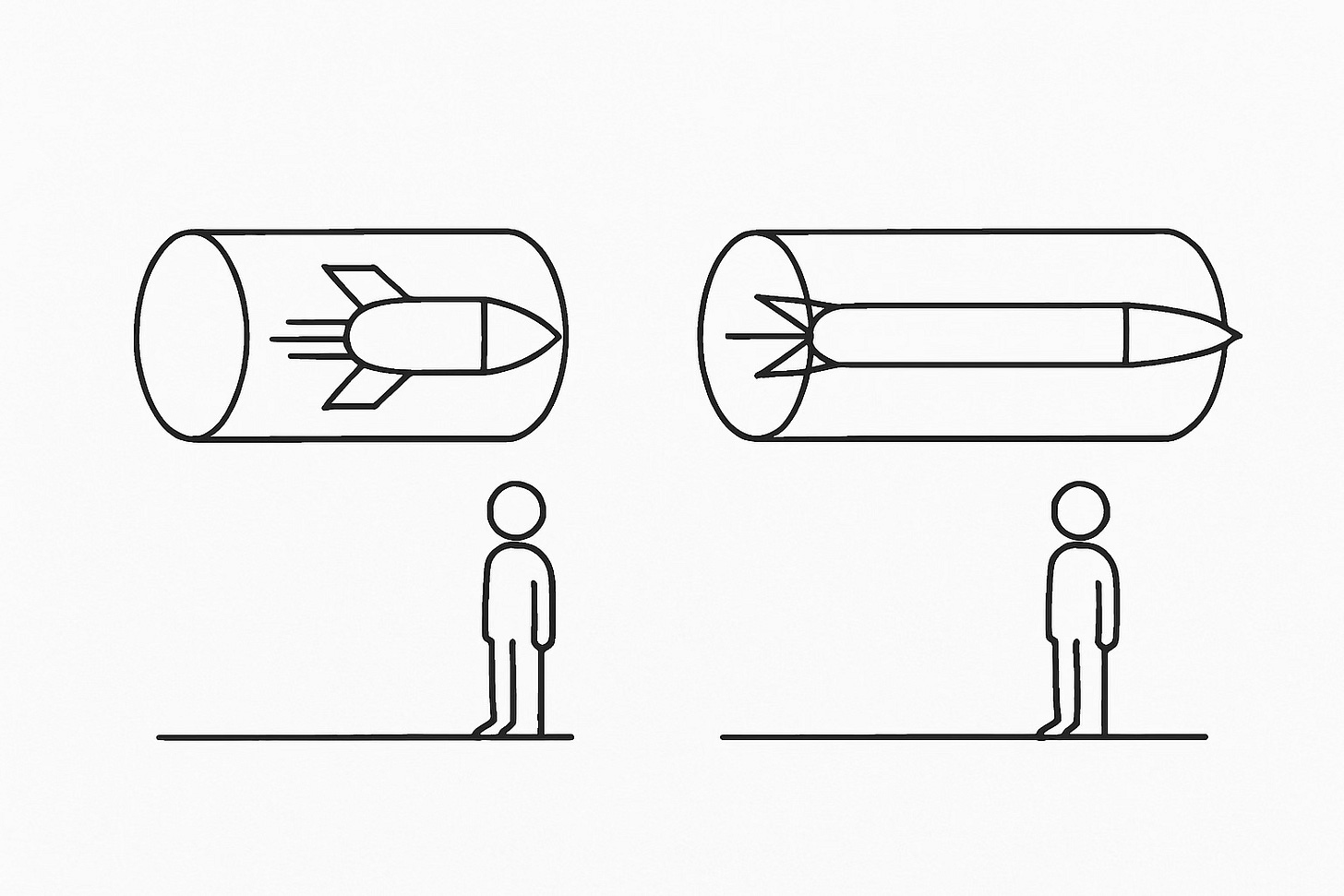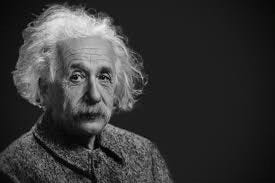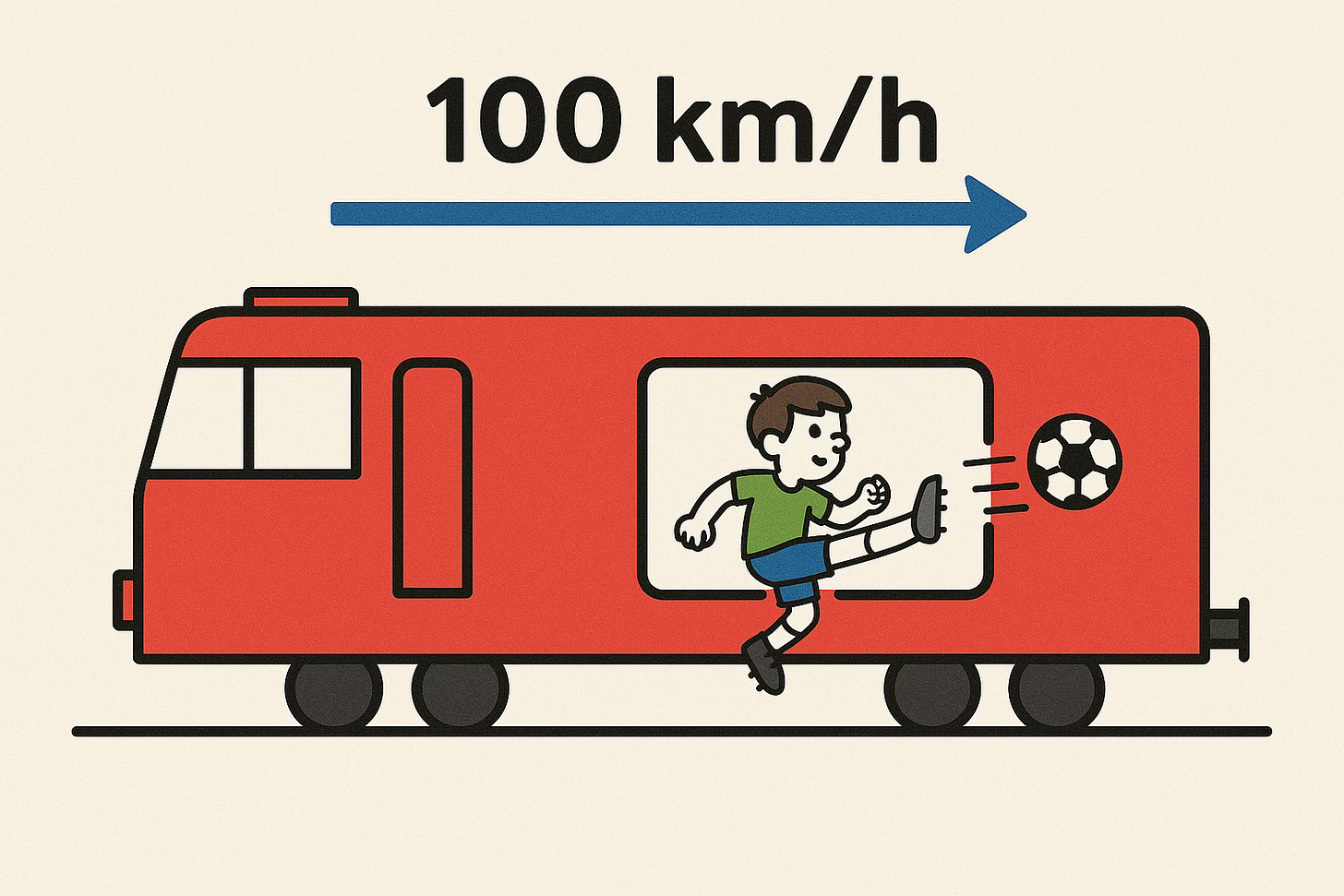When Time Slows Down: Einstein's Special Relativity
Beyond Newton: The Theory That Redefined Time, Space, and Motion
This is The Curious Mind, by Álvaro Muñiz: a newsletter where you will learn about technical topics in an easy way, from decision-making to personal finance.
In 1971, physicist Joseph C. Hafele and astronomer Richard E. Keating took four atomic clocks—some of the most precise clocks ever created—and flew them around the world on commercial airliners.
What they found upon returning was mind-blowing. The flying clocks showed a different time than identical atomic clocks that had remained in the lab. The difference was tiny (billionths of a second) but unmistakable.
Far from being shocked, Hafele and Keating were delighted. This bizarre result confirmed exactly what Einstein's theory of relativity had predicted over 50 years earlier: time itself flows differently depending on how you're moving.
Time dilation, length contraction, relativity of simultaneity…these concepts might sound like science fiction, but they're the fundamental reality of our universe.
Two Flavours of Relativity: Special and General
Einstein's theory of relativity—arguably the most revolutionary scientific advancement of the 20th century—comes in two distinct "flavors".
Special relativity deals with objects moving at constant velocity—no speeding up, slowing down, or changing direction. It's "special" because it only applies to this particular (and simplified) situation.
General relativity expands these principles to all types of motion, including acceleration and the effects of gravity. It's our most precise description of how space, time, and gravity work on large scales.
Today we'll focus on special relativity—the simpler theory that still manages to completely transform our understanding of reality.
Two Simple Ideas That Changed Everything
One of the most beautiful aspects of special relativity is its elegant simplicity.
The entire theory—with all its mind-bending consequences—follows from just two basic principles that Einstein proposed in his revolutionary 1905 paper "Zur Elektrodynamik bewegter Körper" (“On the Electrodynamics of Moving Bodies”):
Postulates of Special Relativity
The Principle of Relativity: the laws of physics work exactly the same way in all frames of reference moving at constant speed.
The Principle of Light Constancy: light always travels at the same speed (roughly 300,000 km/s) for all observers, regardless of how the light source or the observer is moving.
These seemingly innocent principles lead to profound consequences that completely reshape our understanding of reality.
Physics Doesn't Care How Fast You're Going
Imagine waking up in a perfectly smooth-riding train with all windows covered. Could you tell whether you're moving or standing still?
Try walking down the aisle—it feels normal. Toss an apple to a friend—it travels in a straight line. Drop your phone (accidentally, of course)—it falls straight down. No physical experiment you could perform inside this sealed train would tell you whether you're travelling across the countryside or sitting motionless at the station.
This principle—that the laws of physics work identically in any reference frame moving at constant velocity—was first articulated by Galileo Galilei nearly 300 years before Einstein. What makes Einstein's contribution revolutionary is what comes next.
The Speed of Light's Strange Behaviour
Now we reach the truly revolutionary part of Einstein's theory.
Let's return to our train example. If you're on a train moving at 100 km/h and you throw a ball forward at 50 km/h:
From your perspective on the train, the ball moves away at 50 km/h.
To someone standing on the platform watching, the ball travels at 150 km/h (train speed + throw speed).
This matches our everyday experience—velocities add up. But Einstein proposed something radical: light doesn't play by these rules.
If you turn on a flashlight while on that moving train:
From your perspective, the light beam travels at exactly 300,000 km/s.
From the perspective of the person standing on the platform, the light also travels at exactly 300,000 km/s—not 300,100 km/s as we might expect.
This strange behaviour—that light's speed remains constant regardless of the motion of its source or observer—has been confirmed by numerous experiments, beginning with the famous Michelson-Morley experiment in 1887.
This seemingly innocent fact forces us to reconsider the very nature of space and time themselves.
The Mind-Bending Consequences of Special Relativity
From Einstein's two simple principles emerge consequences so profound they completely reshape our understanding of the universe:
Time Dilation: Your Clock Isn't My Clock
Remember the flying atomic clocks I mentioned at the beginning? Here's what's happening: time itself passes more slowly for moving objects. This isn't a clock error or measurement mistake—it's actual time flowing at different rates.
The faster you move, the more time slows down relative to "stationary" observers. If you could travel at 99% the speed of light, you would experience minutes passing while years elapse for those you left behind.
This effect happens even at everyday speeds, just to an incredibly tiny degree. The GPS satellites orbiting Earth move fast enough that they experience time about 7 microseconds slower each day than we do on Earth's surface. Without accounting for this effect, your navigation apps would accumulate errors of about 2 kilometers per day!
Time dilation is the phenomenon by which the time measured by a moving observer is larger (it is 'dilated') than the one measured by a stationary observer.1
Time is slowed down for a moving observer.
Length Contraction: Objects Shrink When They Move
Just as time stretches with motion, space contracts. A moving object appears shortened in the direction of its motion.
This leads to mind-bending scenarios: a 20-meter spacecraft traveling at extremely high speeds might appear just 10 meters long to a stationary observer. Theoretically, a spacecraft that wouldn't fit inside a tunnel while stationary might fit perfectly when zooming through at near-light speed!
Like time dilation, this effect is real but negligible at everyday speeds. You won't notice your car getting shorter during your commute.
Length contraction is the phenomenon by which the distance measured by a moving observer is shorter (it is 'contracted') than the one measured by a stationary observer.
Distances are shortened for a moving observer.

Relativity of Simultaneity: "At The Same Time" Loses Meaning
Perhaps most profound of all: events that appear simultaneous to one observer may occur at different times according to another observer in a different reference frame.
Imagine lightning striking both ends of a moving train. A person standing on the platform might see both strikes happen simultaneously. But a passenger on the train would see the lightning strike at the front of the train first, followed by the strike at the back.
Relativity of Simultaneity: the simultaneity of two events is relative.
Whether two events happen at the same time or not depends on the observer, and both are right within their own reality.
Why This Matters
Special relativity might seem abstract, but its effects touch our lives in surprising ways.
Every time you use GPS navigation, you're benefiting from relativistic corrections. The atomic clocks on GPS satellites experience both time dilation (from their speed) and gravitational time differences (from being farther from Earth's mass). Without accounting for these effects, location errors would accumulate at a rate of about 10 kilometers per day, rendering the system useless.
Modern medicine and scientific research rely on particle accelerators, where subatomic particles are accelerated to near light speed. Engineers must account for relativistic effects when designing these machines—the particles become measurably heavier as they approach light speed due to the famous E=mc² relationship.
Beyond this and many other practical applications, Einstein's theories fundamentally changed how we understand reality. Time isn’t absolute. Space isn’t universal. Cause and effect are constrained by the speed of light.
Our intuitive separation of space and time is merely an approximation that works at the slow speeds of human experience.
A New View of Reality
At human speeds—walking, driving, even flying—the effects of relativity are so tiny that our everyday experience feels consistent with Newton's classical view of fixed space and time. It's easy to believe these are fundamental, unchanging parts of reality.
But special relativity reveals a different truth: time slows, lengths contract, and simultaneity shifts depending on how you're moving. These aren't perceptual illusions or measurement errors—they reflect the actual structure of our universe.
The universe is stranger and more wonderful than common sense suggests. As you go about your day, remember that the time on your watch, the distance to your destination, and even what events are happening "right now" across town—all depend on how you're moving through our relativistic universe.
What questions do you have about relativity? Reply to this email or post a comment and let me know what other concepts you'd like me to explain in upcoming issues!
In Case You Missed It
The Hidden Psychology of Change: How We Value Gains and Losses
Inside ChatGPT: How Large Language Models Predict the Future of Text
The Impossible Race: How a Tortoise Challenged Mathematics for 2,500 Years
What do you want next?
The attentive reader might be wondering: "which is the moving and which is the stationary observer? Wasn't the notion of moving relative to the observer, according to the Principle of Relativity?"
Indeed, such notion is relative. When talking about time dilation, ‘the stationary observer’ is the observer in whose reference frame the start and end of the event both occur in the same place.




It's cool that there's a mathematical way to confirm that there isn't just one truth haha